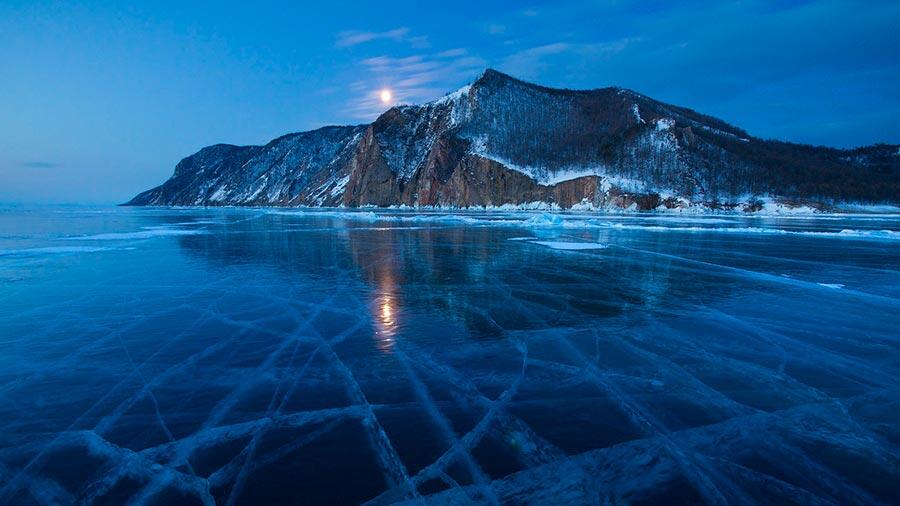The low season for ecologists who study lakes is in winter, because it is difficult, even dangerous, look under the ice, and these experts thought that, anyway, plants, animals and algae do not do much in the darkness and the cold.However, an international team of 62 scientists who evaluate more than one hundred lakes has concluded that life under the ice is vibrant, complex and surprisingly active.
Their findings reveal the difficulty of understanding the freshwater systems as climate change warms the lakes around the globe. “As the seasons ice are shrinking worldwide, we are losing ice without understanding deeply what we are losing,” says researcher Stephanie Hampton, a professor at Washington State University (WSU, for its acronym in English) in the United States.
“Food for fish, the chemical processes that affect their oxygen and emissions of greenhouse gases will change as the ice recedes,” warns lead author of a study detailed in an article published in the journal ‘ Ecology Letters’.
“A lake is not asleep when covered with a layer of ice and snow –añade Liz Blood, program director of the Division of Environmental Biology at the National Science Foundation, which funded the investigation–. Although low temperatures and the winter light levels can lead to life lake at a slower mode, algae and zooplankton remain abundant. ”
“What will happen if the lake ice cover decreases as temperatures warm? It stated, this experta–. These results are a significant step in understanding what can be far-reaching changes to ecosystems lakes “.
Productivity in winter than the summer in some lakes
Fresh water is fundamental to society as it is used for drinking, manufacture, produce energy, water and fish, ie, that it is particularly important in the developing world protein source. It is expected that global warming will change what we value fresh water, as found a study co-authored by Hampton last year on the warming of lakes around the world.
The new work reveals that what happens in the winter can have a substantial effect on what happens during the rest of the year, especially in lakes that allow the entry of a large amount of sunlight, stimulating the growth of algae and zooplankton at the bottom of the ice. These in turn serve as food sources for fish at the beginning of the growing season.
“In some lakes where ice is really clear and there is not much snow cover, can be a lot of photosynthesis and high productivity” Hampton, who has extensive experience studying Lake Baikal in Russia, the deepest lake in the world explains. “So there were some lakes in this study where productivity in winter really exceeded productivity would in summer,” he says.
Hampton says his Russian colleagues have seen “a small single microecosystem” under the ice, with filaments floating from underground. “It’s interesting to think about these lakes that receive a lot of light through the ice -dice–. The Russian researchers who spend time in Baikal remind us that when you have ice, you have a new habitat, can be a vast habitat that spans around the lake. ”
Marine biologists have documented a key role of sea ice in the livelihood of the polar food webs. “Under the sea ice, is the growth of the foods highest in beneficial fatty acids and as high contributions as 30 percent of total annual productivity”, calculated Aaron Galloway, co-author of the Institute of Marine Biology of Oregon in United States, which was postdoc at WSU when the study began. But until this research, scientists freshwater “were not able to make any estimates like this at all,” says Hampton.
Climate change affects the characteristics of ice
Investigations of frozen fresh water bodies were too irregular. The Ecology Group Plankton of the International Society of Limnology, which has been very influential in aquatic science, has developed a theoretical model of lakes which incorporates the interaction of plankton, nutrients, temperatures and a combination, and in 2011 said, indeed, it was overlooking the winter. “It was a pretty strong statement about how little we know about winter,” says Hampton.
So she and her colleagues ecologists who study lakes demanded data to a list of professional colleagues and received 140 responses from various measures researchers winter conditions, such as levels of plankton and nutrients, which could be compared with the values of summer. Their findings varied widely, often depending on whether a clear lake was covered with ice or snow covered blocking most of the light.
“In some cases, we know that the zooplankton under the ice is really important to plant populations in summer sprout and grow to be more abundant,” describes Hampton. In other cases, there may be algae that consume large amounts of nutrients under the ice, so summer algae are less for their own growth.
However, climate change is about to introduce another set of considerations. “A number of things are changing with climate change, which really affects the characteristics of the ice itself,” says Hampton. For example, the ice season may be shorter; there may be less snow, allowing more light, or there may be more rain during the formation of ice, causing the ice is murkier.
In his view, predicting these changes, “will not be easy”, but believes that scientists need to change their performance lake during the winter. “Overall, this study tells us that limnologists no longer have any –apunta Hampton– low season. No more dead time, especially because we are losing ice very quickly.”
Source: Europa Press











